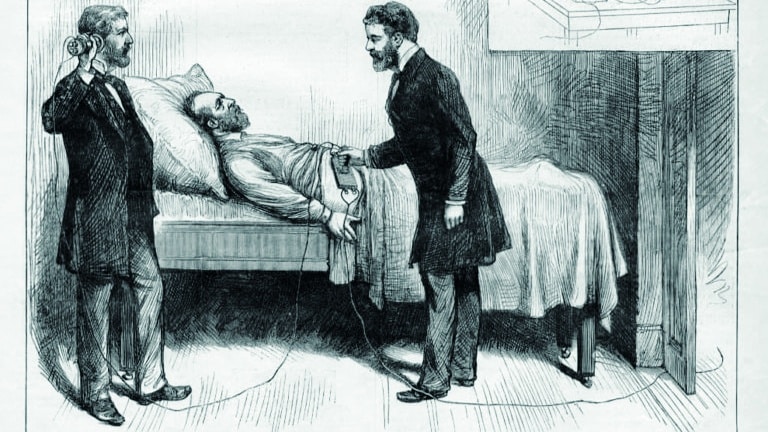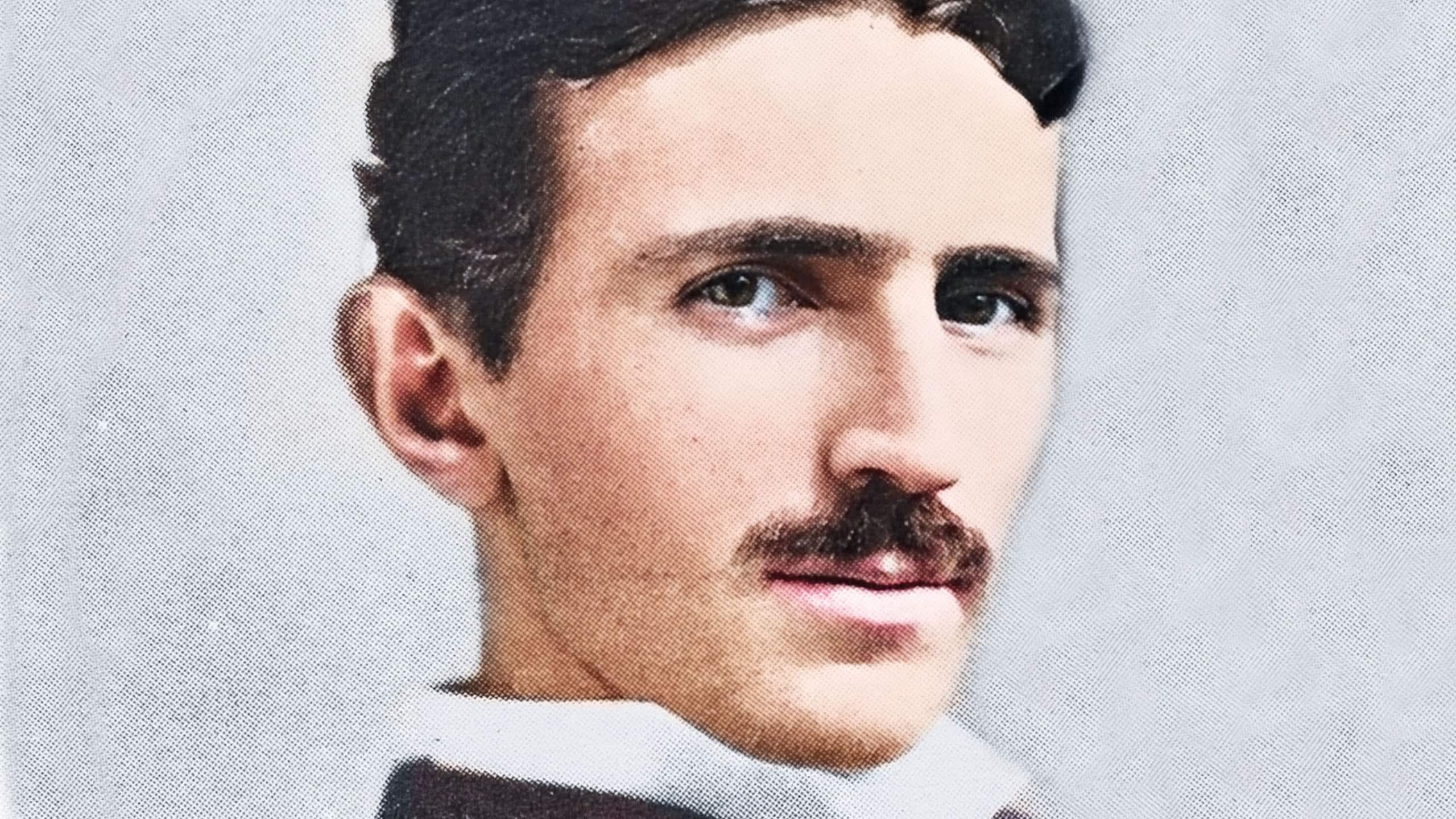At Primetals Technologies, we constantly strive to pioneer new and groundbreaking solutions for the steel industry. We work with passion, inspired by our close partnerships with steel producers from all around the world. Another source of inspiration are the great pioneers that have come before us—innovators who have made a profound impact on the way we live and changed the course of history. In this series, we look at the life, the challenges, and the achievements of some of the most outstanding pioneers of all time. This time, we present visionary inventor Alexander Graham Bell.
Alexander Graham Bell, a towering figure in the annals of science and technology, was instrumental in shaping the future of communication. His invention of the telephone and his unwavering dedication to the education of the deaf have been pivotal in shaping our modern society. Even as a 12-year-old, Bell showcased his ingenuity, devising a machine to simplify the laborious process of grain husking. However, it was his creation of the telephone that truly marked his legacy, connecting continents through a network of voices.
Bell’s innovative spirit was not confined to just one domain. His inventions ranged from a device designed to detect icebergs, an early metal detector aimed at finding a bullet in a president, and even a venture into aviation via experiments with kites and propellers. Bell’s legacy is defined not just by his inventions, but by the boundless spirit of innovation he embodied.
The Man Behind the Invention
Bell was born on March 3, 1847, in Edinburgh, Scotland, into a family deeply immersed in the study of elocution and speech. Bell’s father, Alexander Melville Bell, was a respected speech teacher, and his grandfather, Alexander Bell, was well-known for his work on speech impediments. His mother, Eliza Grace Symonds, despite her hearing loss, was an accomplished pianist. This familial background ignited a spark in young Bell, ultimately steering him toward his illustrious career in sound technology and communication.
- … that Bell’s mother and wife were both deaf, which profoundly influenced his life’s work and his invention of the telephone.
- … that Bell worked on his telephone invention in secret because he was worried about the potential backlash from his other scientific community commitments.
- … that Bell refused to have a telephone in his study, finding it intrusive and preferring uninterrupted work.
- … that Bell founded the company that would become AT&T, one of the largest telecommunications companies in the world.
- … that Bell was one of the founding members of the National Geographic Society and served as its president from 1896 to 1904.
- … that Bell also worked on developing breeding techniques and was particularly interested in the breeding of sheep.
- … that Bell was also an accomplished watercolorist and loved to play the piano.
- … that later in life, Bell focused on the development of alternative energy sources and became an early advocate for renewable energy solutions
- … that Bell was a vegetarian.
The early demise of his brothers due to tuberculosis prompted the Bell family to move to Ontario, Canada, marking a significant turning point in young Alexander’s life. In Canada, Bell’s profound empathy for the deaf evolved into his life’s mission, teaching speech and sound to those without hearing. This endeavor was more than just a professional pursuit; it was a heartfelt calling, setting the foundation for the invention that would define his legacy.
The Call that Connected the World
In the history of mankind, few inventions have revolutionized our world quite as much as Bell’s telephone. It was within the confines of a modest Boston workshop that Bell, engrossed in the challenge of transmitting speech electrically, uttered the first intelligible words through a wire: “Mr. Watson, come here, I want you.” These words, spoken on March 10, 1876, to his assistant Thomas Watson, heralded a new era in human connectivity.
The only difference between success and failure is the ability to take action.”
Alexander Graham Bell
The telephone did more than just transmit sound; it bridged immense distances and brought immediacy to human interaction. Bell’s invention weaved together the fabric of society, allowing voices to be heard from miles away as if they were right beside us. This breakthrough in communication fundamentally altered daily lives, transformed businesses, governance, and global relations. It turned the world into a global village.
The Patent Wars
Bell’s journey to patent the telephone was fraught with contention and rivalry. In a time that was abundant with invention, Bell’s claim faced numerous challengers. Elisha Gray, most notably, filed a patent for a similar invention on the same day as Bell, igniting a fierce dispute that would test both men’s resolve.

In 1881, an urgent crisis led Alexander Graham Bell on a historic mission. The U.S.A.’s 20th President, James Garfield, lay critically wounded by an assassin’s bullet, its location inside his body unknown. With time running out, Bell rapidly conceived an early form of the metal detector, hoping to locate the bullet and save the President’s life.
Renowned for inventing the telephone, Bell now faced a new challenge. He adapted the principles of electromagnetic induction, which he had explored in his telephone experiments, to create this innovative device. Despite the ingenuity of Bell’s invention and his rapid response, the attempt to save Garfield was thwarted by interference from the metal bed frame, an unforeseen setback in an era before modern medical imaging.
Although the endeavor failed in its immediate goal, Bell’s quick thinking and adaptability under pressure paved the way for future advancements in metal detection technology. His invention has since become a cornerstone in fields ranging from medical diagnostics to security and archaeology.
This episode in Bell’s life highlights his extraordinary ability to harness his scientific knowledge for humanitarian purposes, transcending his work beyond mere communication innovations. Bell’s emergency invention not only demonstrated his genius but also his profound commitment to applying science for the betterment of society.
Despite securing the patent, Bell faced considerable opposition from Western Union, a communications giant of the time who assembled a formidable team, including Thomas Edison, to develop their own telephone technology. Western Union’s refusal to purchase Bell’s invention and their subsequent infringement on his patent sparked a series of legal battles that would cement the contentious origin of the telephone.
Despite these legal battles and the swirling controversy, Bell persevered. His defense was robust, and ultimately, the Supreme Court upheld his patent, acknowledging his place in history as the inventor of the telephone. This legal affirmation not only cleared the path for Bell’s future endeavors but also set a precedent for the protection of intellectual property that would resonate through generations.
Beyond the Telephone
Bell’s inventiveness extended beyond the telephone. His commitment to assisting the deaf community led him to develop groundbreaking speech teaching methods and innovate the audiometer. This device, vital for hearing tests, made significant contributions to the fields of audiology and speech therapy, demonstrating his dedication to bettering lives through technology.

In 1880, Bell, already a celebrated inventor of the telephone, embarked on an experimental journey with the photophone – an invention that transmitted sound on a beam of light. This innovation, though less known than the telephone, was a precursor to the optical fiber technology that defines modern communication.
The photophone worked using a simple yet ingenious principle. Sound vibrations were used to disturb a mirror, which then modulated a light beam. These light fluctuations, carrying the sound, were then converted back into audio at the receiving end. This method of using light as a medium for sound transmission was revolutionary.
Bell considered the photophone his greatest achievement, believing its potential to transform communication was even greater than that of the telephone. Unfortunately, the limitations of the era’s technology and the lack of understanding of its profound implications meant that the photophone did not gain immediate practical application. However, it became the conceptual cornerstone for the development of modern fiber-optic communications.
Bell’s work on the photophone illustrates his extraordinary ability to think beyond the limitations of his time. His innovation in marrying sound with light was not just an experiment; it was a leap into the future, setting the stage for a world interconnected by high-speed, light-based data transfer.
His impact also extended into the realms of transportation, both in the air and on water. Bell’s fascination with flight fueled his ventures into designing kites and aircraft, marking a pivotal contribution to aeronautics. His notable advancements in hydrofoil technology, achieving speed records, redefined the limits of marine transportation. Furthermore, Bell applied his scientific acumen to maritime safety by inventing a mechanism for iceberg detection, aiming to safeguard sea travel. His diverse range of inventions underscored his extraordinary ability to apply scientific principles innovatively.
Bell’s Enduring Legacy
The legacy of Alexander Graham Bell is etched deeply into the blueprint of modern communication. His invention of the telephone was a catalyst for a world where instant, global communication is a cornerstone of societal and industrial infrastructure. Today, Bell’s foresight is felt in every fiber-optic cable and satellite signal that traverses the planet, enabling digital communication systems that drive industries, including steel manufacturing.
Reflecting on Bell’s life reveals a remarkable confluence of personal drive, intellectual brilliance, and transformative invention. From his empathetic beginnings in Scotland to the legal battles that solidified his patent, Bell’s journey was underscored by an unwavering commitment to innovation. His telephone revolutionized communication and laid the groundwork for the digital networks that sustain industries like steel today.
Bell’s legacy is a testament to the power of perseverance and vision. His innovative spirit continues to inspire the path forward for inventors, scientists, and visionaries in communication and beyond. As we close this chapter on Bell, we carry forward the essence of his inventive spirit, echoing his dedication to progress and connectivity.
Timeline
1847
Born on March 3 in Edinburgh, Scotland, Bell was raised in an environment steeped in linguistic and speech study.
1870
After the deaths of his two brothers from tuberculosis, Bell’s family moved to Canada, settling in Brantford, Ontario.
1871
Bell begins teaching at the Boston School for Deaf Mutes where he is recognized for his skill and innovative teaching methods.
1872
Bell opens his own school in Boston to train teachers of the deaf, eventually becoming part of Boston University.
1876
The first successful telephone transmission of clear speech took place on March 10 when Bell summoned his assistant, Mr. Watson.
1880
Awarded the Volta Prize for his invention of the telephone, Bell establishes the Volta Laboratory in Washington, D.C., U.S.A.
1903
The innovator is present when the Wright brothers achieve their first powered flight.
1915
Bell participates in the first transcontinental telephone call by speaking to Watson from New York to San Francisco.
1922
Alexander Graham Bell dies on August 2 at his private estate, Beinn Bhreagh, in Nova Scotia, Canada.


